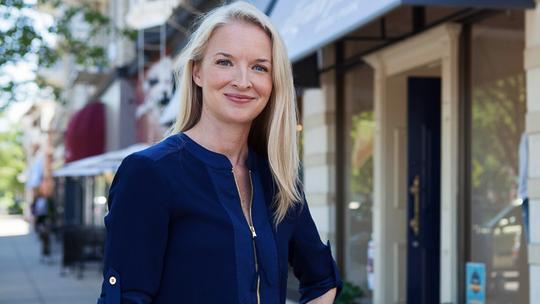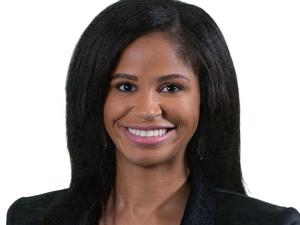
We had to wait a long time for the winner of the presidential election. In the process we learned a lot about the regional differences in our nation – from the liberal coasts, to the conservative middle, to the African-American vote in the Southeast, and to the Hispanic vote in the Southwest. We learned that Hispanic citizens are not homogenous, but nuanced; Cuban-Americans in Florida have different concerns than Mexican-Americans in Arizona.
Our electorate is a patchwork of demographics and values.
I could not have predicted the outcome of the election, but none of the other revelations surprised me. In the 2016 election, my colleagues in New York and San Francisco were sure of a Hillary win – probably because 80% of their neighbors voted for her. But that year, my street in Hyde Park was split 50-50 between Trump and Clinton signs.
As a consumer venture capital investor, I’ve long been intrigued by our country’s nuances, and understanding the over 60% of the U.S. population that resides in the heartland is critical to our investment strategy.
I am frequently asked two questions:
- Why consumer venture capital?
- If you invest all over North America, why do you live in Cincinnati?
To answer one would automatically lead me to the other, so I’d like to explain why a consumer VC has set up shop in the heart of Middle America.
Consumer companies are household names – Peloton, Dollar Shave Club, Beyond Meat – but VCs are often shy to invest in these companies. While consumer products account for 20% of our GDP, only 3% of venture capital dollars are invested in consumer. Why?
1. Consumer expertise is not in Silicon Valley or Manhattan – it’s in the middle
Some 75% of the world’s venture capital is based in San Francisco – and most of it is focused on tech and biotech. To a large degree, San Francisco has a competitive advantage in tech. But what about consumer companies?
History and geography tell us why so few major consumer companies are located in San Francisco. Back in the 1800s it didn’t make sense to manufacture something in San Francisco and send over the Rocky Mountains to New York. Today, it still doesn’t.
Instead, we find that the vast majority of consumer and retail companies are located along the Ohio and Mississippi Rivers. For instance, Procter & Gamble, the largest consumer products company in the world, relied on key raw materials streams that were readily available because of the proximity to the river. Hogs would be herded down to slaughter houses on the river, providing fat for its first products: candles and soap. From there, P&G expanded into every consumer category and recruited scientists from all over the world. Today, it employs more Ph.D.s than all the Ivy League schools combined.
2. Most consumers live in the middle, even though most VCs are on the coasts
Manufacturing and R&D are only part of the picture. Consumer-goods companies need to be close to the end consumer, not just physically but also emotionally. You have to deeply understand how your consumer lives, what they value, and what they need. Today, 60% of the country’s population lives in middle America.
According to Fair Isaac, Cincinnati is the No. 1 consumer test market in the country, demographically representative of the U.S. consumer. This is why brands and restaurants come to Cincinnati to test their concepts.
This is one of our biggest assets as investors: Cincinnati is a great town to pull a focus group together. Prices that may seem normal in San Francisco and New York, two of the most expensive markets in the world, wouldn’t fly in the Midwest. This keeps us from investing in those things that don’t make a lot of sense for the “average consumer.”
3. Consumer is perceived as “simple,” “low-tech” and “not scalable”
This couldn’t be further from the truth. Take a Pampers diaper. It contains more than 100 patents – a lot of technology – and is manufactured on a machine that makes more than 1,000 diapers a minute. It is irrefutably scalable, and being the best in a $70 billion market takes a lot of expertise.
This is why more venture dollars aren’t being poured into consumer companies – because venture capital investors simply don’t have the domain expertise in consumer like they do tech, so diligence is harder. Our investors are top consumer executives from P&G, Coca-Cola, Kroger, and Smucker. They sit in on screening calls with prospects that we’re evaluating in their category of expertise, they help our portfolio companies grow and they make introductions to retailers and help with R&D and margin improvement.
4. Consumer is perceived as not being as “high return” as tech
When Peloton, one of my previous portfolio companies, became the largest, fastest consumer IPO in history, I thought surely I’d heard the end of the “consumer isn’t high-return” argument.
According to PitchBook, from 2007 to 2017, consumer-focused venture funds outperformed the venture asset class by 7%. While consumer companies may not see as many IPOs, they are three times more likely to be acquired by a strategic acquirer and half as likely to go out of business. Consumer doesn’t have the scientific risk and business-model risk associated with most tech investments, which is the main reason for the outperformance. There’s a much lower loss ratio, and steadier gains.
Investing from the heartland isn’t new
We know better than to try to invest in the next SnapChat or TikTok – that’s not what we do. Here in the Midwest, surrounded by the top consumer experts in the world, our firm is positioned to invest in the next Drunk Elephant, RX Bar or Beyond Meat.
Not all investors need to be located on the coasts; Warren Buffet lives in Omaha, Neb., after all, and he’s doing just fine. Like Buffet, we like investing in ignored and undervalued categories; after all, a buyer’s market isn’t a bad thing when you’re a buyer.
Elizabeth Edwards is founding partner of Cincinnati-based H Venture Partners. She has invested in more than 30 companies over the past 15 years, including Roots, Freshly, Soma, and two of 2019’s unicorn IPOs — Peloton (Series A) and Bill.com (Series D).





